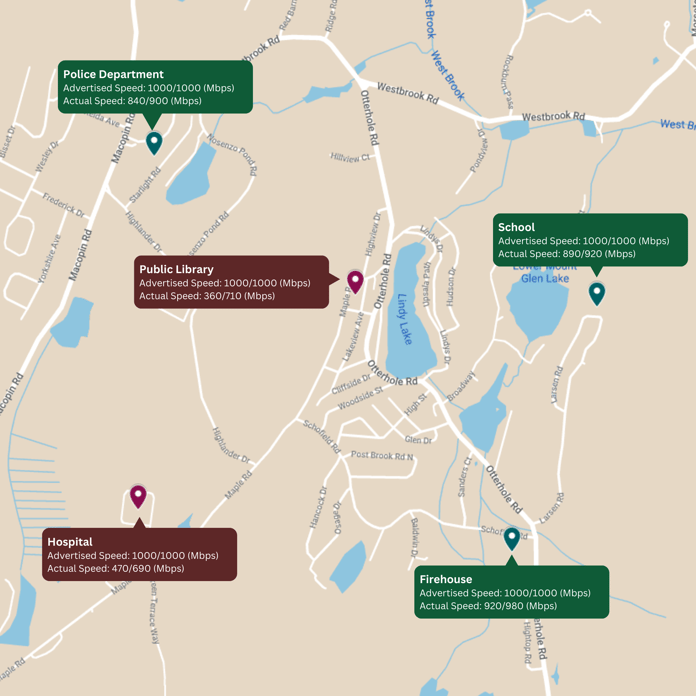Community Anchor Institutions (CAIs) have been inaccurately reflected in many broadband service maps, which can create barriers for counties and ISPs to receive the correct funding for these institutions.
This was a significant problem with the initial FCC Fabric map, with many anchor institutions appearing as grey due to the FCC determining that most schools, libraries, and medical care facilities, are more likely to subscribe to customized, enterprise-grade internet service (as opposed to mass-market internet service), and therefore are not Broadband Serviceable Locations (BSL).
The recently proposed NTIA State Challenge Model aims to address data inaccuracies of CAIs, with the introduction of a challenge allowing any CAI labeled as receiving 1 Gigabit service and as 'served' to contest this designation if their actual speeds are slower, which would classify them as 'unserved' and eligible for funding.
Why the Speed Data is Inaccurate
There are a few reasons why the speed data for CAIs can be inaccurate. For one, a significant portion of the speed data used for State Maps has been obtained through ISP data along with state webpage speed tests. In a competitive market, providers may not fully disclose the speeds they offer in order to prevent funds from being allocated to a competitor.
Secondly, webpage speed tests - while better than nothing - oftentimes don’t paint an accurate picture of the service a location is receiving. For example, I recommend any readers of this to use online testing tools to test their own broadband service. Usually, the speeds will be much different each time, which can vary from source to source, and will not always be an accurate assessment of the service you’re receiving.
Lastly, based on our experience with CAF Performance Testing, we’ve found that Gigabit service plans often struggle to deliver speeds close to one gig, particularly during peak usage times. This issue is common among Gigabit service plans, and we expect CAIs also to encounter this same problem - meaning many of them should be considered ‘unserved’.
How to Address These Issues with Anchor Institution Speed Audits
We’ve developed a broadband speed testing service designed specifically to measure the internet speeds of Community Anchor Institutions. This service enables county officials to obtain the most accurate and up-to-date information regarding the quality of service being delivered to their local CAIs.

To implement this solution, an individual places one of our Stamper Boxes, a small IoT Edge device, in the Anchor Institution(s) they wish to test. The number of locations can vary, but ATS can specify which institutions could be the best candidates for speed testing using publicly available datasets in conjunction with state maps. Plus, these devices are provider and hardware agnostic, meaning they can be used with virtually any brand modem or routing device.
Once installed, ATS can remotely test the device's metrics and convert the data into the appropriate format to comply with the NTIA guidelines. This data can serve two purposes: first, to provide a comprehensive understanding of the CAIs in a community, and second, to challenge inaccurate state map data to create an opportunity for CAIs to become eligible for BEAD funding.
Seeing measurements like upload and download speeds, latency, etc. collected over time is more informative than a one time web-based speed test. This accountability will also help states monitor and manage the delivery of broadband to these institutions over time.
Closing
The accuracy of broadband maps has been a major concern. While the current belief is that obtaining comprehensive and precise information is futile, our Anchor Institution Audit does provide one aspect of a broadband map that allows complete, and total accuracy of speed data for CAIs.
A diversity of measurements from different instruments, aspects of a connection, and different segments of the network path between a CAI and the Internet help paint a complete picture of the connection these locations are receiving.
For more information about our Anchor Institution Audit, and how else we can help communities get better data related to BEAD state mapping challenges, get in touch with us today.
